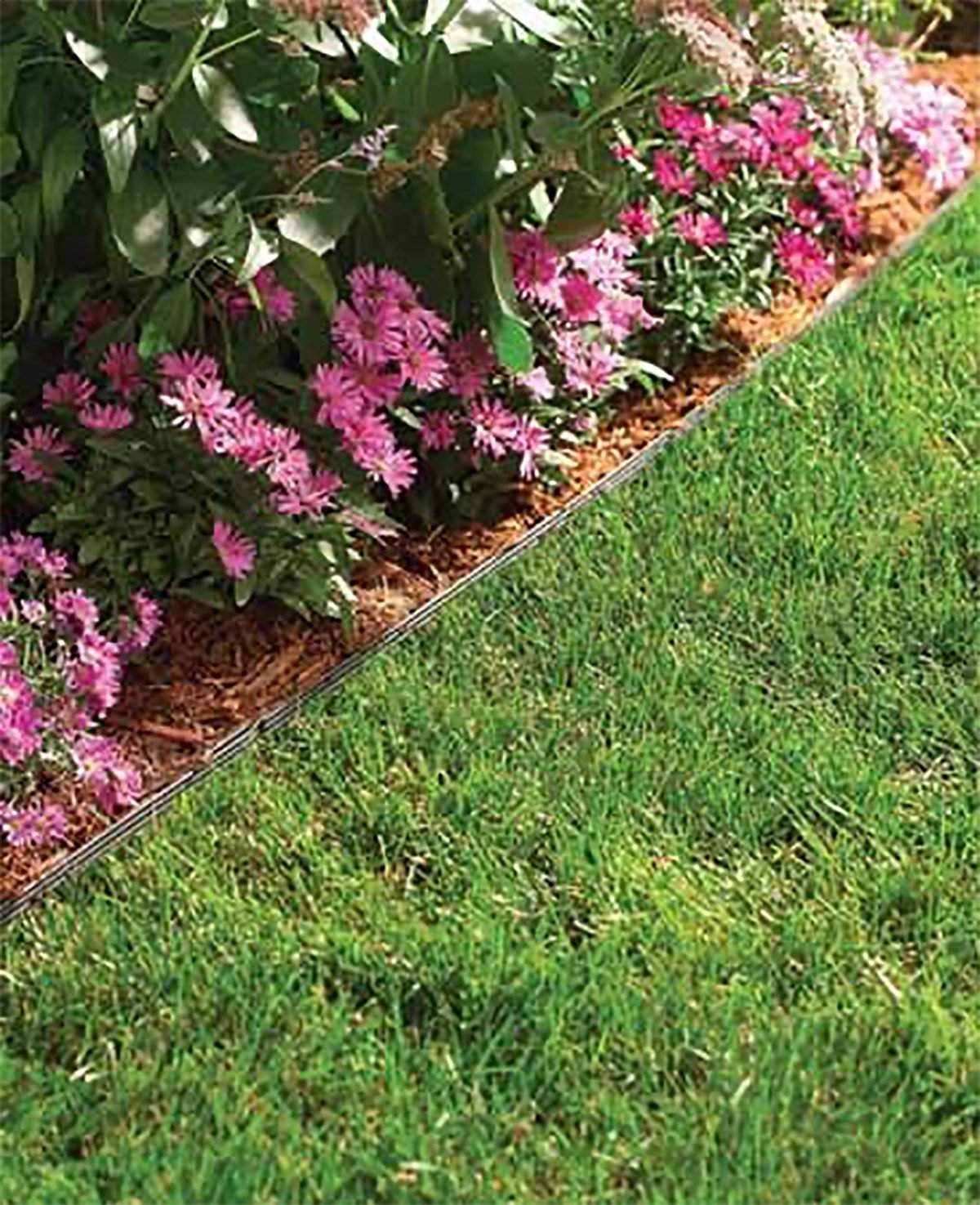
Metal Lawn Edging
The simplest and most subtle landscape borders that effectively separate your lawn from a garden are 4-in. deep strips of steel, aluminum or plastic. The metal lawn edging bends easily into smooth, graceful curves and stops the spread of grass roots.
However, painted aluminum and steel offer the sleekest, most refined garden edging look because they almost disappear against the grass and garden bed. The plastic types of garden edging have a prominent black bulge along the top edge.
All work best on fairly even terrain; if you have a lot of dips and rises, it’s easier to install a paver border.
Although aluminum and steel landscape edging cost about the same, aluminum is much lighter. It weighs about 41 lbs. per 100 ft., while steel weighs about 225. With aluminum landscape edging, you get a professional look without the heavy lifting.
Plan to set the garden border with the top edge about 1/2 in. above the soil level to maintain the lawn/garden separation and keep roots from crossing over the top. This makes the garden border almost invisible and allows you to mow right over the top. However, be aware that the top of the thin lawn edging can hurt bare feet. After cutting it, make sure you round off any sharp edges with a file.
The key to setting this garden border is to cut a clean vertical edge along the grass with a square spade. Then you can lay the garden border tightly against the edge when you stake and backfill it.
There’s no rule for shaping the edge. Simply follow the edges of your lawn, making smooth, gradual curves. To make smooth, sharp curves, bend the metal lawn edging around a circular form.
The thicker landscaping edgers better withstand those inevitable bumps and hard knocks that go with lawn mowing.
Did you miss our previous article...
https://rsssuperfeeds.com/life-hacks/what-are-the-best-types-of-attic-insulation






